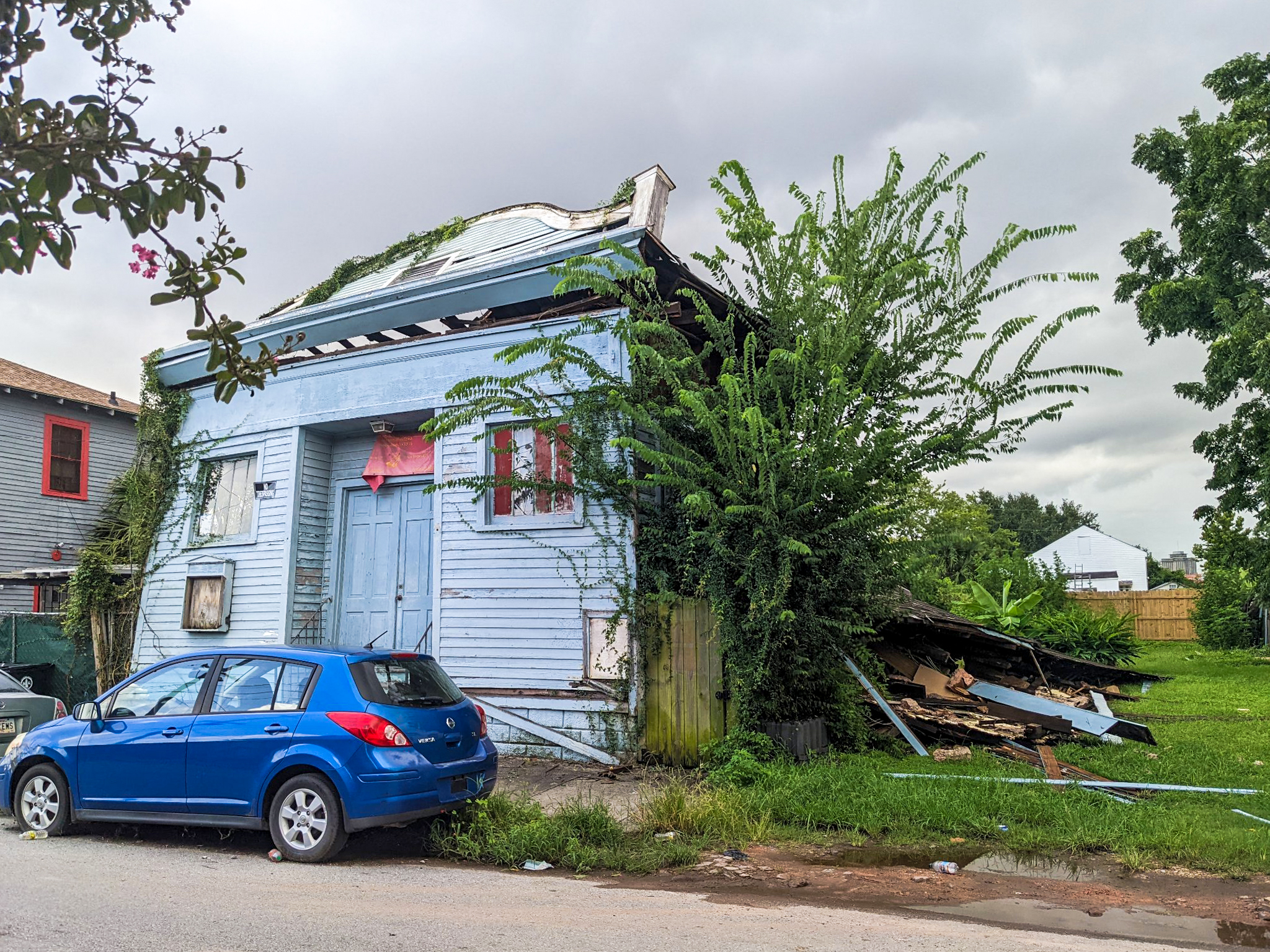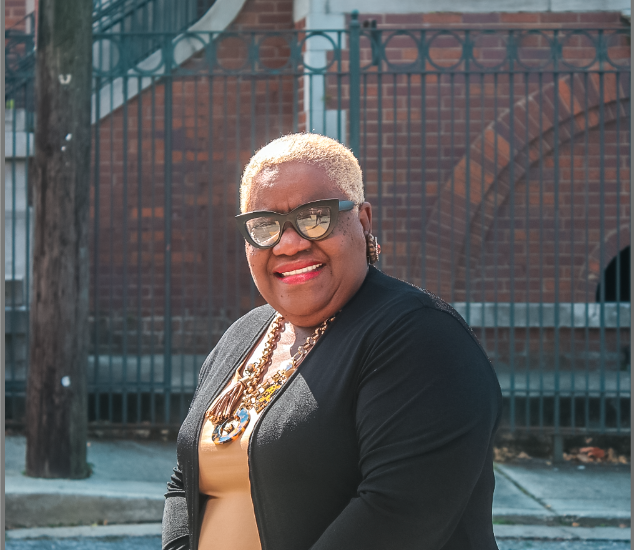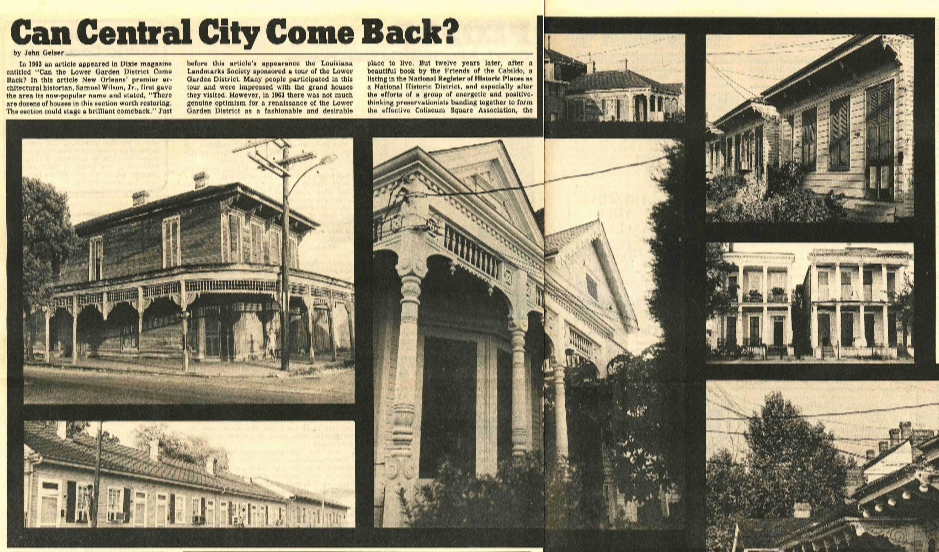With homeowners waiting to learn if their houses will be torn down to build the proposed medical complex, renovations are stalled in the same Mid-City neighborhood where hundreds of volunteers spent a year restoring flooded homes after Katrina.
Ask nearly anyone living in New Orleans if they think the proposed LSU-VA medical center will be a boon to the city, and the answer is liable to be a resounding, “Yes!” Ask someone who lives in the proposed 27-block demolition zone, and the response will be far less positive. From Claiborne to S. Rocheblave, Canal to Tulane Avenue, you’ll hear answers ranging from “New Orleans really needs this,” to “It’s a crime.”
Despite the perception by many that the area is filled with largely blighted homes and run-down commercial structures, residents say it just isn’t so. In fact, they say their neighborhood is better since Katrina than ever before, and they’re mystified as to why the complex couldn’t have been built somewhere else. They’re also furious that they are being placed in economic and emotional limbo while the players in the game decide their opening moves.
Like many in the area, Nurse Gaynell Blatcher-Thornton says she’s not against the medical complex because she realizes the city needs the health care facilities. However, she says, “there are so many other areas they could have used. They haven’t even decided what to do with Charity
Hospital and the old [Veteran’s Administration] facilities.” Blatcher-Thornton and others point to the land across Tulane Ave., much of which houses burned out and vacant buildings, and to flooded buildings around City Hall, some of which still sit unoccupied.
Beth Bergman, who is on the board of the area recovery organization, PNOLA (Phoenix New Orleans), agrees. She says many homes in the sector experienced little or no flooding (including her own on S. Prieur St.). She says the area is approximately 50 percent reoccupied – with many more renovations stalled due to uncertainty – and has one of the lowest crime rates in the city.
Bobbi Rogers, who lives in the VA target area on Palmyra, concurs. “We think the VA is good for the city, but they don’t need to tear down these houses. City Hall’s attitude is, ‘There is nothing we can do about it. The VA had special conditions and this was the only land that worked for
them.’ They also keep saying they cannot tear down Charity because it’s an historic building. But what about tearing down 200 historic houses?”
For Rogers, the loss is intensely personal, not only because of the house she is restoring – which she says “took a lot of time to fall in love with” because of the damage – but because of her volunteer work here. She and her husband, Kevin Krause, came to New Orleans from Phoenix in March 2006 on a six-week volunteer stint. They fell in love with the neighborhood and the people and decided to “put our money where our mouth was.” They spent a year with Americorps, working with hundreds of other volunteers restoring the blocks that LSU and the VA now want to demolish.
Despite their disappointment with the destruction of the neighborhood, many residentsare resigned to the project, believing, as Blatcher-Thornton
says, “We can’t do much to stop it.” However, they are less complacent about what they say is a much greater indignity – the uncertainty that surrounds their future. According to Bergman and others, no one in the area has had any contact from either the VA or LSU regarding buyout details.
Bergman and her husband, Carl, who originally worked on the Tulane-Gravier Planning Council that developed an unsuccessful neighborhood-sparing plan for LSU, now say they are more than ready to sell. Carl Bergman has been in contact with a Baton Rouge lawyer who is purportedly involved with the project.
“Carl called her the first week of August and had a nice chat and lots of information,” says Beth Bergman. “They said they were in the process of hiring a relocation company…and would be sending out letters to all affected people informing them of the process. She expected these letters would go out by the end of August.”
Despite several more calls and promises, Beth Bergman says, they have received nothing, and their last call to the lawyer has not been returned. “We really do not know exactly what they plan to do or when they
plan to do it,” she says.
Rodgers, Blatcher-Thornton, and others who live north of Galvez St. are in a similar quandary, but with even less confirmation. LSU has published maps of the entire project, including its site below Galvez, and in September announced it had chosen its design team. The school has also announced that land acquisition is underway, with construction to begin in June 2009 and a scheduled opening date of December 2012.
The VA, on the other hand, has been very close-lipped. Since announcing its preferred, 34-acre site (from Galvez to S. Rocheblave and Canal to Tulane Ave.) in August, the VA has stated only that it is conducting an environmental assessment and will make a decision on the site after the
review is complete.
“They’re treating this neighborhood like it’s a blighted area with no people here,” says Blatcher-Thornton. “This is my home. We’ve been hearing that something like this was possible for years – it didn’t just surface. When we applied for renovation permits, they could have told us something about the possibility.”
Retirees Diana and John Monley, who have lived in the neighborhood for 34 years and in their home on Palmyra for 15, say if they had been notified of the possibility when they returned, they would have “just kept on going” somewhere else. Instead, they learned of the VA site from a neighbor who saw it in the paper. “The part that got me,” says John Monley, “was that the article said the City had already signed off on it. The City was saying ‘we know there will be some neighbors who will fight it, and we are ready for them.’ They’re ready for us, and we didn’t even know they were coming? We were ambushed.”
The Monleys, who were some of the first residents to move back, spent all their savings and lived in one room with no power to accomplish the renovation. Now, like the rest of their neighbors, they are in limbo. “I don’t want to be in New Orleans East, or in Central City, or in Uptown, or on the West Bank,” says Diana Monley. “The idea of starting all over again, in a strange house with strange neighbors, is very upsetting. The City is telling us to come home, and you get here, and this is what it is.”
Blatcher-Thornton says she’s trying to remain positive about the wait, especially in front of her 10-year-old son Josh, who sees moving as a chance to get a bigger house and a dog. “It’s so difficult, when you are waiting, and don’t know what, when, or where,” she says. “If they could just tell us, ‘your property is worth X amount and we are going to give you that much on this date.'”
But then, speaking reflectively, she adds, “You know it’s worth so much more than that. When I think what we went through, the effort and the hard work, before and after the storm, and the problems we had to deal with, and going from a comfort zone to God knows what, I just hope we will be compensated well, and that’s what I am holding on to. We’re going to enjoy
here while we are here and deal with it as we’ve been dealing with it. Otherwise, it will drive you crazy.”
Hearing these words from a woman who rode out Katrina with ten others on the second floor of the dependency behind her house that she still cannot visit alone, and who spent days in the Superdome and will only say “we experienced it,” makes one wonder if authorities understand just how much they expect these residents to give up.





